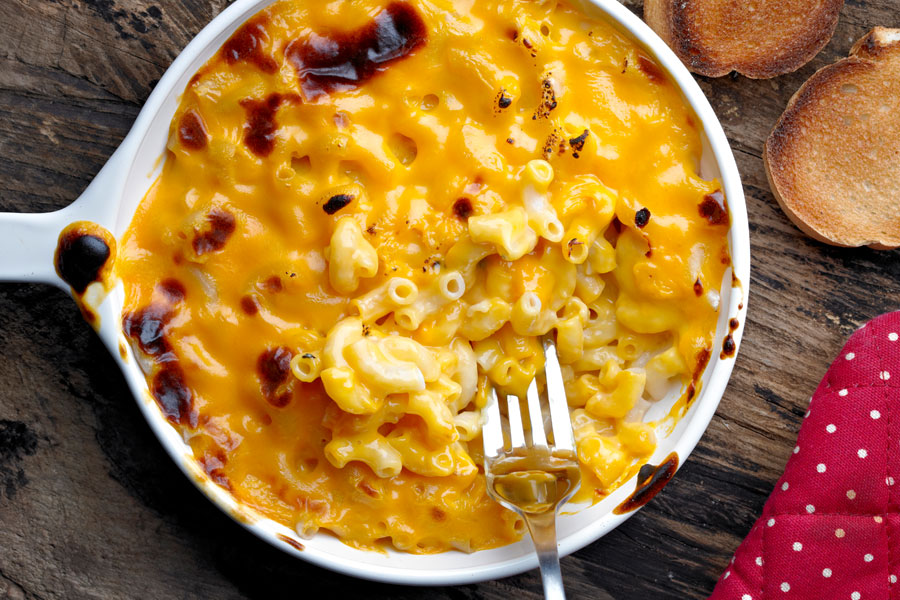
National Cheese Day
There’s nothing like gooey, yummy, melted cheese. Essential for burgers, quesadillas, and of course mac & cheese. Today we are celebrating National Cheese Day and to do so, we are taking a deeper bite into melted cheese. Let’s break it down.
The science behind how cheese melts
Melted cheese is a science. Cheese is made up of protein and this protein is the key difference between good melting cheese and bad melting cheese. When cheese is heated up, the protein breaks and some hold their shape better than others. For example, younger, high-moisture cheeses like mozzarella, Taleggio, brie, Gruyère, Emmental, and Jack are the most reliable melters. Drier grating cheeses, such as Parmesan and Pecorino-Romano are not.
What are the best cheeses for melting?
The best cheeses for melting are called process cheeses. These products are designed to be easily meltable and difficult to break. Start with real cheese, usually a young cheddar, and blend it with extra milk, extra milk protein, and melting salt to prevent proteins from sticking together. A good example of this is American cheese, where they have so much extra liquid added to them, they have very low melting points, allowing for extra-gooey melted cheese.
At the other end of the spectrum, there are acid-set cheeses. Impossible to melt no matter what type of tweaking you implement. Fresh goat cheese, quick farmers cheese, paneer, queso fresco, and ricotta just can’t melt. When heated, the acid in these cheeses lose water, but not proteins. Water will continue to be cooked off, but the proteins in the curd are only going to tighten, holding the cheese together. These cheeses won’t melt, but you can cook or even grill them!
What are the best cheeses for mac & cheese?
Well, good melters with quality taste, like sharp cheddar. Sharp cheddar is the most common, and it works great, and if you’re using a cheesy blend we recommend cheddar as the base. Now, you get to mix in some fun, flavorful cheeses. Gruyère is common, it melts just as beautifully as cheddar, but brings additional tasty flavors to the table. Gouda, Muenster, fontina, Havarti, and Monterey Jack are also excellent options.
Enjoy National Mac & Cheese Day with a melty, flavorful blend of your own. For whichever cheese you choose to call upon, stop by your local Price Chopper/Market 32 to pick it up or shop with us online!
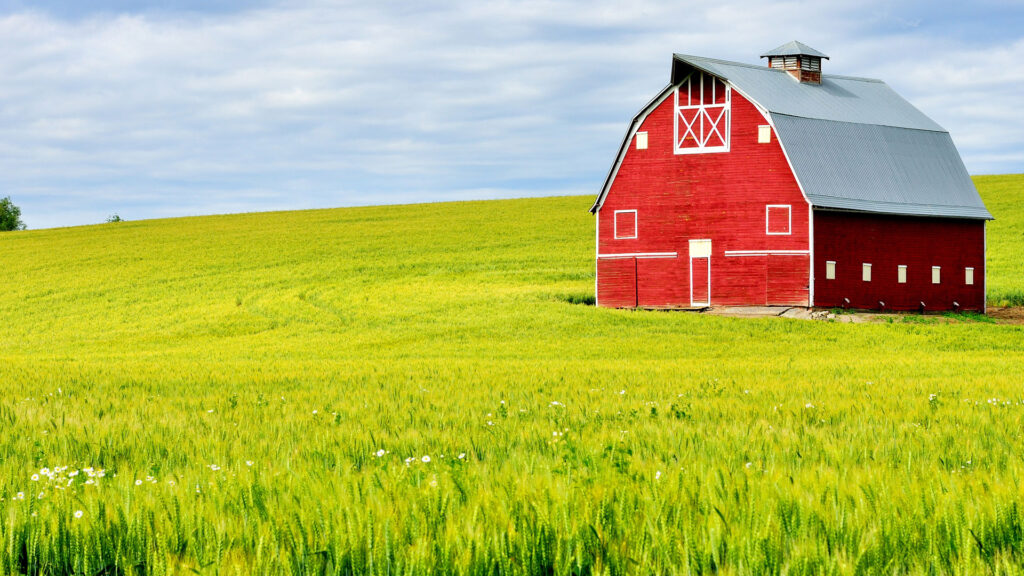
Dairy Delivers Sustainable Nutrition
Ellie Wilson
MS, RDN Manager of Lifestyles and Wellness
June is National Dairy Month! My Facebook memories are showing me pictures of many visits to dairy farms across New York State, where I learned about the ways dairy farmers are innovating in animal care, land and water management. The dairy industry has sustainability built into its DNA – farmers are diligent about managing their family farms from generation to generation. They’re always looking for smarter ways to do work, such as using technology, like cow exercise trackers to monitor health, and milk tank temperature systems that text the farmer if the temperature changes. The result of this good stewardship and passionate care is a nutritionally amazing product that delivers sustainable nutrition. This definition is really about the ongoing science-based pursuit of providing affordable, accessible, nutrient rich foods that can nourish the world’s growing population, while also protecting environmental resources now and for future generations.
The foundation of dairy sustainability is the biology of cows themselves. Dairy cows have 4 stomachs, which means they can eat a wide range of foods/plants other animals cannot eat and produce a nutrient rich product. They also produce manure, which is regulated and managed in multiple ways – for example, many farms have digesters that extract liquid and gas from manure, turning that into fertilizer for farm fields and energy for the farm and community. The fertilizer supports grass and cover crops that protect topsoil. Cows are also up cyclers of food waste – citrus pulp, almond hulls, leftover pumpkins and fruits and vegetables are all on the menu, reducing food waste and bringing nutrition benefit back to the food system.
Water is a valuable resource on dairy farms. It is recycled several times as drinking water for cows, to cool them when it’s hot, wash farm equipment and clean the barn floor. After cleaning barns, nutrient rich water can be collected and used to fertilize fields. Data tells the sustainability story best – research shows the amount of water needed to produce a gallon of milk declined 30% over a 10-year period. Overall, the dairy community has reduced the carbon footprint of milk by 63% over a recent 10-year period due to improvements in animal health, cow comfort and farm management practice. Looking ahead, they have committed to an ambitious net zero carbon emissions by 2050. Climate change mitigation is evident in how they produce the same amount of food using fewer resources but still providing great nutrients and great flavor – the 13- nutrient package that is milk and all the things we can make from it is a fantastic result of a constantly improved process. America’s dairy farmers have set aggressive new environmental sustainability goals to achieve greenhouse gas neutral neutrality, optimize water uses and improve water quality.
Dairy farm families have a long-term investment in environmental care. That torch is passed from generation to generation. I have met many of these families and could only be impressed by the dedication to their work. Cows are the center of the dairy farm and caring for them is a passion and a priority, 365 days a year. You and your family are part of the sustainable nutrition cycle and benefit as well – one of the best ways to add nutrition value to any meal or snack is to enjoy a glass of milk or add fun to any afternoon with a bowl of ice cream! Take a virtual tour of a dairy farm and learn more about where delicious dairy comes from!
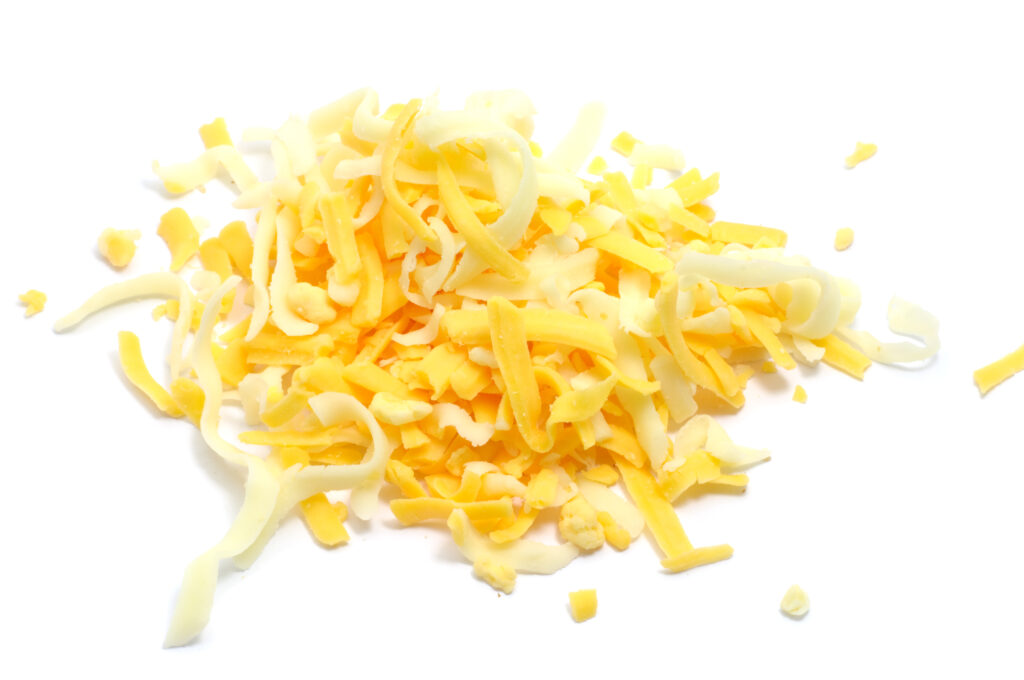
Checking Out Cheddar!
Say cheese! It’s National Cheddar Day and we are shredding with excitement. Cheddar is the most popular type of cheese in America for its reliability and versatility. There’s no limit to what you can do with cheddar. So, in order to give it its proper recognition, let’s learn more about this cheesy favorite.
Cheddar gets its name from the Cheddar Village in Somerset, England where it was first crafted. A smooth texture identifies a young cheddar, while an aged cheddar can be crumbly. According to Anne Saxelby, of Saxelby Cheesemakers, it’s the cheesemaking process that defines cheddar, rather than the cheese itself. She says, people don’t realize that cheddar is actually a verb. During the process itself, the curds are cheddared, creating the cheddar cheese.
Around the 19th century, more countries adopted cheddar and began selling it in their grocery stores. Cheddar’s ability to made anywhere in the world helped it become one of the most popular cheeses. Although the process around the world is similar, and the cheddar is made from cow’s milk, different styles exist due to differing aging processes and rinds.
Saxelby explains in detail how cheddar can be enjoyed throughout the aging process. Young, mild cheese aged 1-3 months is creamy, slightly sweet, and yellow. Semi-sharp cheddar is aged 3-6 months, where the cheese begins to develop a tang. Matured cheddar aged 6-12 months is sharp, drier, crumbly, robust, with a strong flavor. Finally, vintage cheddar, aged 12-24 months, is savory with a salty crunch.
There’s wide variety of cheddar rinds and styles around the world, which makes it very versatile and popular. Check out some our must-try Cheddar recipes. Including, Irish Cheddar Mac & Cheese, White Cheddar & Bacon Kraut Reubens, and plenty more.
Don’t forget to visit your local store or shop our online aisles for your favorite cheddar products!
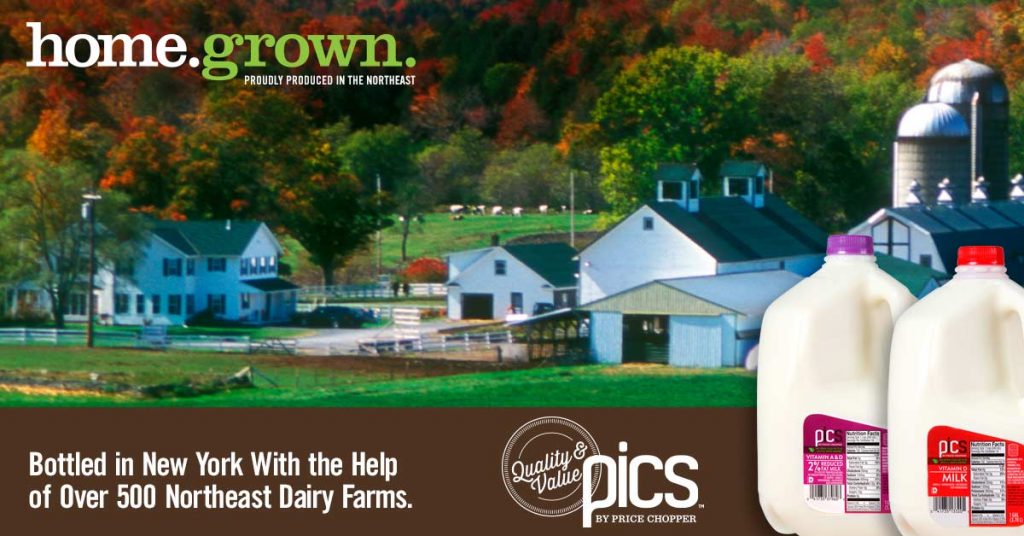
Celebrate Shopping Local with Northeast Made Products!
At Price Chopper & Market 32, we pride ourselves on providing our customers with fresh, close to home ingredients. To ensure that when you’re shopping our aisles, you’re choosing from the highest quality selection of locally made products. It’s what’s best for you and your family!
Milk: Our PICS milk is bottled in New York with the help of over 500 Northeast dairy farmers: When you take home a jug of our milk, you’re taking home the product of hard-working local farmers (and cows) from our region. Located in Hudson Falls, NY, Ideal Dairy Farms is a great local dairy farm. These folks are just a few miles down the road from our Fort Edward store. Ideal Dairy first began selling milk to local residents around 1908. These days they produce over 16,000 gallons of milk per day! Despite operating for over 100 years, the vision of Ideal Dairy has remained unchanged: they’re committed to the production of quality milk for their community.
Granola: Every batch of PICS granola is hand made in Schenectady, New York. Made with the finest ingredients using artisanal baking techniques, this granola will soon be your go-to granola. Snack on it plain, add milk, top your ice cream with it – no matter how you use it, you will enjoy every bite!
Maple Syrup: We live in one of the only regions in the world with the ideal climate for maple agriculture, and we’re proud to partner with a wide variety of local maple farmers and producers here in the Northeast, who are currently preparing for this year’s maple sugaring season.
These are just a few of the wide variety of local products available in our stores. You can find many more homegrown PICS items on our shelves. Featured in our ad this week are PICS cottage cheese and eggs, two of our go-to locally made items.
Shop Local PICS Products
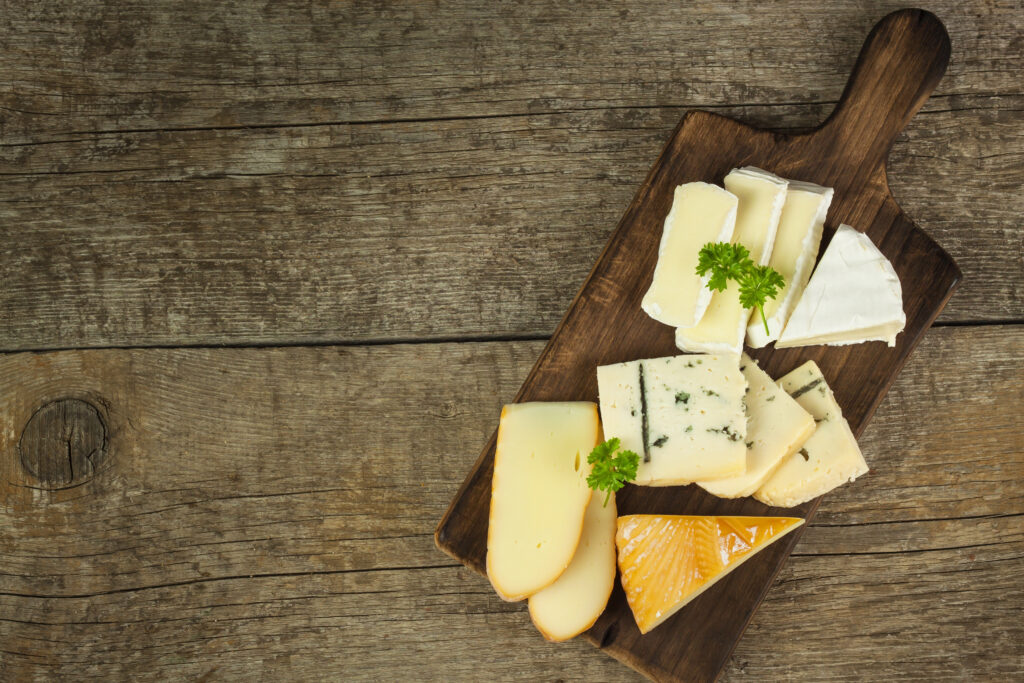
Celebrate with Cheese Pairings!
For many, cheese is a staple when it comes to celebrating, especially during the holidays. Luckily, our in-store delis provide a plethora of tasty cheeses, perfect for pairing with a relaxing drink. We’ve created a list of some of our favorites, each with their ideal beverage pairings. Try these options below and find your new favorite combination!
Vermont Creamery Honey Goat Log: Vermont Creamery Clover Blossom Honey Goat Cheese takes Vermont’s classic, mild fresh goat cheese and blends it with sweet clover honey. The honey pairs perfectly with the tart creaminess of fresh goat cheese. Try it with Barbera wine, Founders All Day IPA or a Belgian Tripel Beer like Ommegang’s Three Philosophers.
Fleur de Franco Brie: A beautiful wheel of French double cream Brie, Fleur de Franco is pleasantly mild and approachable, yet fully flavored with a buttery interior and soft, fluffy rind. Pair it with a sparkling wine, Chardonnay, or a German pilsner like Saranac Adirondack Lager.
Grafton 2 Year Old Cheddar: Fits the classic profile of a New England Cheddar: buttery notes with a bold, sharp tang and a long, nutty finish. The aroma is lactic and bright, with flavors of sweet cream, freshly mown hay, and tangy, cultured milk. Completed by a moderate acidity. Pair it with balanced, full-bodied wines such as Merlot or White Burgundy, or brews such as Smuttynose Old Brown Dog Brown Ale, Brooklyn Brewing Bel-Air Sour Beer, or even Angry Orchard Hard Cider.
Market 32 American Grana by BelGioioso: Made from freshly gathered local raw milk, this premium American Grana Parmesan cheese is allowed to mature a minimum of 18 months on wooden shelves in special caves. During this process, each wheel is hand-turned to ensure proper aging and development of its deep, nutty flavor and granular texture. Try it with bold Cabernet Sauvignon or a bock beer like Shiner Bock.
BelGioioso Creamy Gorgonzola: Handcrafted and aged 90 days in special caves, master cheesemakers hand-rub each wheel with salt and pierce small holes into the rind of the cheese, allowing air to penetrate and facilitate the growth of beneficial mold. This care and craft creates an exceptionally earthy flavor and creamy texture. Cut right through the thin rind and spread on a baguette. Great when paired with a Harpoon Rec League or other light IPA’s.
Any of these ideas pique your interest? Visit us online or at your local store to find all of these pairing items!


